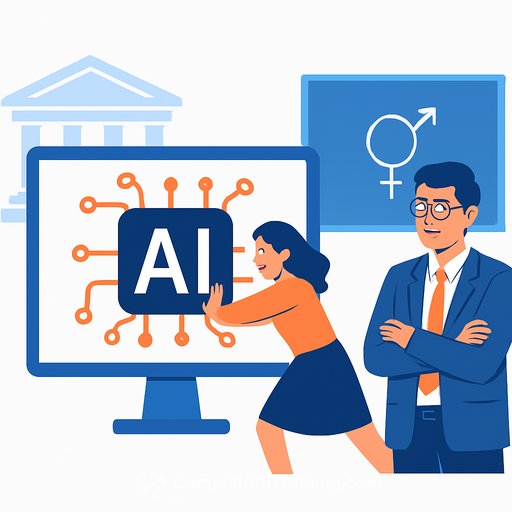How AI is reshaping education - from teachers to students
AI isn't a future topic for PD days. It's already here, changing how we plan, teach, and assess. Districts that treat it as optional will put their graduates behind.
Leaders like Emily Sanders (Hempfield) and Robert Harris (Freeport Area) are showing a clear path: teach the teachers first, set guardrails, then bring students in with purpose. The goal isn't to outsource teaching. It's to remove friction so teachers can do more of the work humans do best.
Why this matters for schools
Most jobs will adapt to AI by 2050, and students will compete in a market that rewards AI fluency. AI-skilled workers earned roughly 56% higher wages in 2024, and industries most exposed to AI are seeing sharp productivity gains.
By 2030, up to 30% of hours worked on many activities could be automated. That's a curriculum signal: we should teach students how to work with AI, not around it.
Train the teachers before the students
Hempfield is building staff confidence first through workshops, podcasts, and peer-led sessions. The message to staff is simple: try, iterate, and it's okay to fail. That open lane creates adoption without fear.
Freeport Area formed a cross-functional committee within a year of ChatGPT's release and chose not to block AI. They treated it as literacy, not a threat. Students learn what AI is before they use it.
Clear guardrails: the "traffic light" policy
Teachers and students stay aligned with simple signals:
- Red: No AI use.
- Yellow: Limited use for specific parts (e.g., brainstorming, outlines); confirm with the teacher.
- Green: AI allowed; cite where and how it helped.
This removes ambiguity, supports ethical use, and keeps ownership of learning with students.
Tools that save time (and keep the human in charge)
Magic School helps teachers adapt lesson plans by grade, purpose, and reading level. An eighth-grade social studies teacher can instantly generate leveled readings, freeing time for feedback and discussion.
Teach FX gives private, objective feedback on classroom talk using audio analysis. It turns teacher reflection into a weekly habit without adding meetings or paperwork.
These tools don't replace expertise. They remove tedious steps so teachers can coach, question, and connect.
Ethics, bias, and source checking
Staff training should cover data privacy, hallucinations, bias, and source verification. Teach students to check claims, cross-reference citations, and ask: "What's missing?"
Avoid a punitive-first culture. Instead of relying on AI detectors (which can mislabel), add an "AI usage" field on submissions. Students can disclose where they used AI and why. This builds transparency and teaches judgment.
Student rollout: start early, build depth
Freeport begins AI literacy in third grade: what AI is, how it works at a high level, and ethical guidelines. Usage comes later, when students can apply it responsibly.
Middle school adds digital literacy with more on bias, research checks, and prompt quality. High school applies AI to coursework: study aides, feedback loops, and structured simulations.
Classroom examples you can deploy now
- Historical interviews: Students prompt a chat tool to role-play a figure from the American Revolution, then conduct a source-checked interview. Teacher monitors transcripts.
- Writing support: Use AI for brainstorming, vocabulary, and structure. Final drafting and voice stay with the student. Require reflection notes on AI inputs.
- Study systems: Upload guides to generate quizzes or flashcards. Encourage spaced repetition and error logs.
- Accessibility: Convert readings to summaries or audio so multilingual learners and students with IEPs can keep pace.
Implementation playbook for districts
- 1) Build a cross-role AI committee: Admin, teachers, IT, students, and parents. Meet monthly.
- 2) Publish policy: Traffic light rules, data privacy, citation expectations, model disclosures, and consequences for misuse.
- 3) Run PD in cycles: Short demos, hands-on labs, and classroom pilots. Share wins and misses in 15-minute stand-ups.
- 4) Start with high-friction tasks: Differentiation, rubrics, exemplar generation, and feedback drafting.
- 5) Update assessments: More oral defenses, in-class writing, process checkpoints, and reflection artifacts.
- 6) Student induction: Teach ethics and prompt quality before full use. Add an AI usage statement to every major assignment.
- 7) Parent communication: What AI is, what it isn't, how it's used, and how data is protected.
- 8) Measure impact: Track teacher time saved, student engagement, differentiation coverage, and learning outcomes.
What educators are seeing
Teachers report more time for small-group work and conferences when AI handles the busywork. Administrators note higher interest in training once staff see practical wins. Skepticism fades when policies are clear and support is steady.
The pattern matches past tech shifts: internet, graphing calculators, learning platforms. Teach the tool. Set boundaries. Keep the learning goals front and center.
Where to get structured training
If your district is building AI capability and needs a curated path for staff, explore job-aligned options here: Complete AI Training - Courses by Job.
Bottom line
AI is now part of the classroom toolkit. With clear rules, practical tools, and consistent training, it creates more space for human connection and better learning. Start small, keep it transparent, and iterate with your staff and students in the loop.
Your membership also unlocks:






